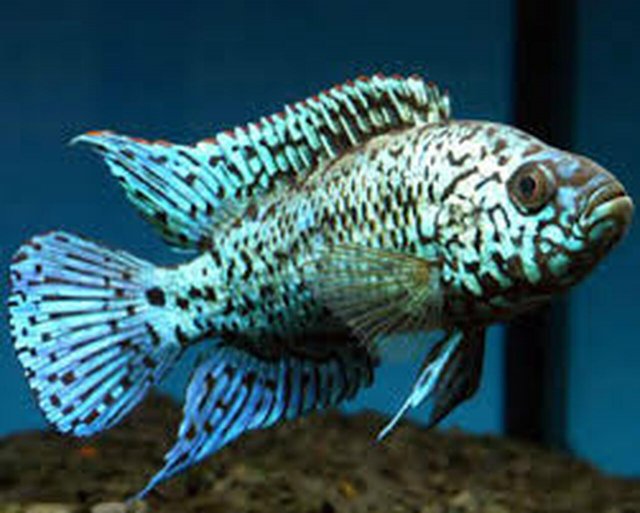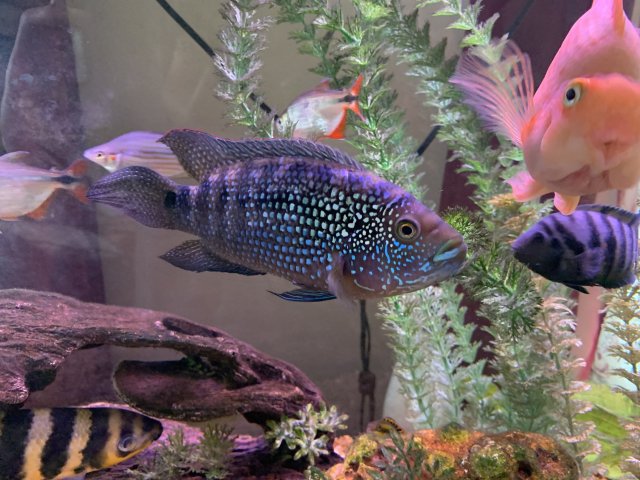When you breed jd to EBJD you get normal jds carrying the electric blue gene. When you breed these back to eachother or ebjds, you get ebjds. When you breed these to leucistic jds you get platinums. It behaves like a normal recessive gene. And like all recessive genes, requires inbreeding to show up in offspring. What does this result in? Weird looking offspring. Go look at some of the spawn logs we have on the forum.
As for the convicts having nuchal humps, prominent nuchal humps, abnormally bulky bodies, dull colors in both sexes, and abnormally long fins are not common in wild convicts. There are only a few locales that actually naturally get that bulky and they still look more well rounded/less deformed.
As for EBJD having weird black patterns under their (what is essentially just overlapped) pearling, this can be seen in again, any cichlid that naturally has pearling when bred to have higher amounts of it. You can see this in certain carpintis locales, where the black between their pearling is eventually bred to just be little black wormlines between the blue, like what you pointed out in EBJD.
I am not sure why it is so hard for people to understand that a mutation building off an ancestral trait can occur in multiple species of closely related fish. This argument has come up and been shot down for every species of cichlid that has an electric blue gene. You can see these kinds of things on a larger scale in evolutionary trees. Higher intelligence evolved in multiple unrelated groups of primates independently because of a common ancestor having an abnormally large brain. Flight or at least gliding evolved in birds, pterosaurs, various lizards and a couple other groups of "non-avian" dinosaurs because their common ancestor happened to have abnormally hollow bones. Inflation evolving in pufferfish and their relatives multiple times independently, etc. While I understand evolution doesn't go in leaps like cichlids being inbred to the point where suddenly some of them come out with connected pearling, it goes to show that it isn't unheard of for seeds in ancestry to randomly sprout in certain lineages.




